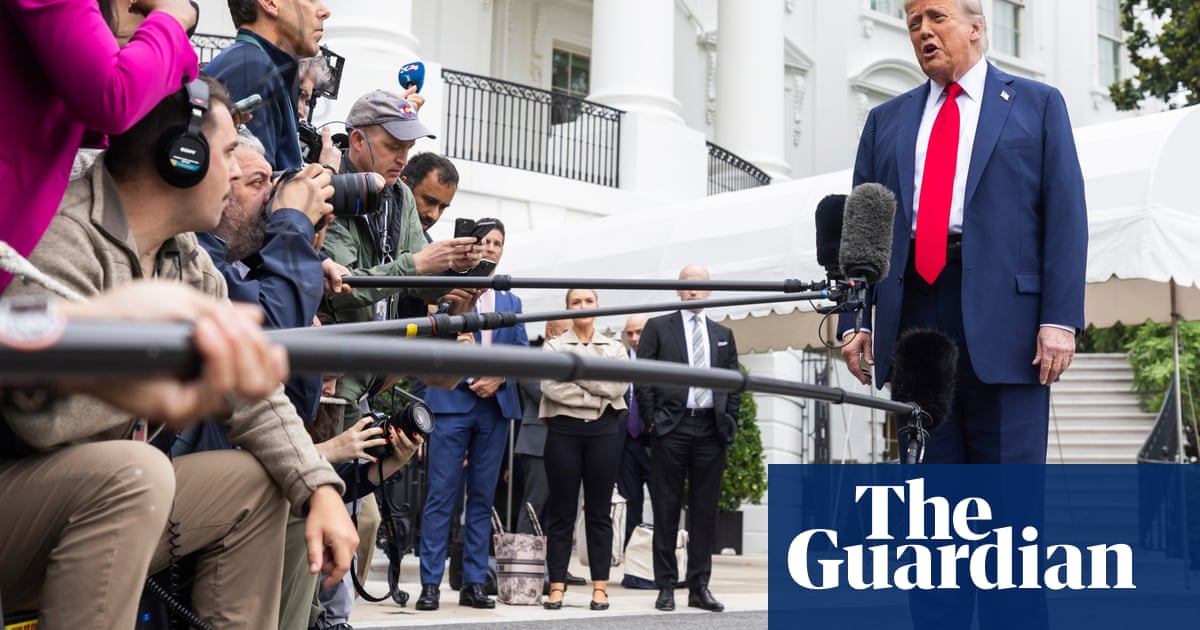In the outer reaches of the Magasphere, it would be fair to say the advent of the first pope from the US has not been greeted with unbridled enthusiasm. Take Laura Loomer, the thirtysomething influencer and conspiracy theorist, whose verdict on Leo XIV was as instant as it was theologically uninformed: “Anti-Trump, anti-Maga, pro-open Borders, and a total Marxist like Pope Francis.” Also doing the rounds on X was a short summary of Leo’s supposed transgressions before ascending to St Peter’s chair: “Trashed Trump, trashed Vance, trashed border enforcement, endorsed DREAMer-style illegal immigration, repeatedly praised and honored George Floyd, and endorsed a Democrat senator’s call for more gun control.”
So far, so tedious. The comic-book casting of the new pope as a globalist villain in the US culture wars is traceable back to his predecessor’s impact on liberal opinion a decade ago. Pope Francis’s sometimes lonely championing of progressive causes, such as the rights of migrants, gave him a kind of liberal celebrity and led Time magazine to name him “person of the year” in 2013. Pope Leo, born in Chicago, has been pre-emptively caricatured by much of the Maga right as a continuity pontiff who will, in effect, front up the religious wing of the Democratic party.
Leaving the simplistic conflation of religious perspective and political positioning aside, the truth is far more interesting than that. It may also be more challenging for Catholic Maga luminaries such as the vice-president, JD Vance, the secretary of state, Marco Rubio, and Donald Trump’s sometime adviser Steve Bannon if they are serious about their faith.
Bannon and Vance – a Catholic convert – are representatives of a traditionalist movement in the church, which sought to undermine Francis’s papacy at every turn and has become a kind of theological vanguard for the “America first” era. In January, Vance notoriously invoked St Augustine to justify the Trump administration’s decision to cut international aid and impose a brutal immigration crackdown. One of Francis’s last acts was to refute the vice-president’s reduction of the Augustinian concept of neighbourly love to a version of “charity begins at home” (though delivering a papal rebuke was not enough to spare him from a visit from Vance the day before he died).
But it would be too easy (and too reminiscent of their own performatively aggressive approach) to simply dismiss the Maga Catholics as theologically beyond the pale. Many Catholics might, for example, legitimately sympathise with Bannon’s analysis of the neglect of working-class interests in 21st-century western liberal democracies. The deepening inequality and corrosive individualism of our times is seriously at odds with Catholic social teaching, which has historically promoted the dignity of labour, social solidarity and a just wage.
The problem is that, in the absence of a leftwing economic populism to challenge the injustices of the globalised era, a rightwing version has filled the gap in the US and beyond. Its form of solidarity is nationalistic and insular, its cultural outlook is xenophobic and its political style is authoritarian and deliberately confrontational. The Maga critique of “globalism” is not limited to the neoliberal economic world order, also condemned by the last three popes; it extends to a repudiation of the foundational Catholic commitment to universality, expressed through compassion for the stranger and a sense of the world as a shared common home.
Enter Pope Leo. The most geographically diverse conclave in church history was surely aware that in choosing an American to succeed Francis, it was setting up a potential showdown between the Vatican and Trumpian nationalism. The new pope’s choice of name is a sign that he recognises the scale and the novelty of the challenge that the rightwing populist turn represents.
The last Leo, a patrician Italian elected to the papacy in 1878, made it his mission to confront the ruthless laissez-faire economics unleashed by the Industrial Revolution and the emerging Marxist response to its cruelties. In Rerum Novarum, his groundbreaking 1891 papal encyclical, Leo XIII laid out swingeing criticisms of the greed that placed profit before people and allowed extreme divides in wealth to undermine the common good. At the same time, in terms that were to prove tragically prescient, he identified in early communist movements a dangerous idolatry of the state and a lack of respect for individual autonomy and rights.
Last weekend, before his first mass in St Peter’s Square, Leo XIV explicitly set himself the task of following in his 19th-century predecessor’s footsteps. That would mean, he told a Rome conference, addressing “the dramatic nature of our own age, marked by wars, climate change, growing inequalities, forced and contested migration, stigmatised poverty, disruptive technological innovations, job insecurity and precarious labour rights”.
The daunting length of that list, and the interlocking, global nature of its crises, should be viewed as an early critique of the Maga worldview. In Leo XIII’s day, the burgeoning Marxist movement incubated a totalitarian strain that would go viral in the 20th century. The success of Trumpian nationalism is also in part a response to the depredations of capitalism, this time in the context of globalisation. But its authoritarian evangelists have hijacked the working-class cause to inflict new injustices on migrant “invaders” and have lost sight of the need for global cooperation to prevent an environmental catastrophe that threatens the poor most of all. The strategy has proved electorally astute. But as Leo will surely make clear, it has nothing to do with Catholicism.
In a column published at the weekend, the American Catholic commentator Sohrab Ahmari referenced a sermon by Leo from last year, in which the future pope acknowledged that the issue of migration “is a huge problem, and it’s a problem worldwide” that needed to be solved. This recognition, Ahmari suggested, could at least open up the possibility of fruitful future dialogue with the Maga Catholics in and around the White House.
He failed, however, to quote the sermon’s next passage: “Every one of us, whether we were born in the United States of America or on the North Pole, we are all given the gift of being created in the image and likeness of God, and the day we forget that is the day we forget who we are.” Words for Vance and Rubio, who met Leo after Sunday’s inaugural mass in Rome, to ponder.
-
Julian Coman is a Guardian associate editor

 German (DE)
German (DE)  English (US)
English (US)  Spanish (ES)
Spanish (ES)  French (FR)
French (FR)  Hindi (IN)
Hindi (IN)  Italian (IT)
Italian (IT)  Russian (RU)
Russian (RU)  3 weeks ago
3 weeks ago
























Comments